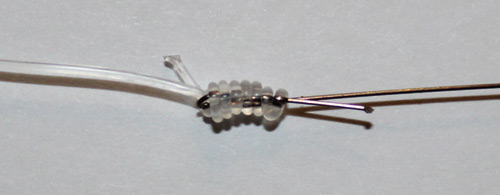
In South Florida, kingfish can be caught year round, but June is one of the best months of the year to target them as the bigger fish tend to show up on the reefs when big schools of bonito and blackfin tuna invade our waters just offshore. Kingfish are aggressive predators with extremely sharp teeth and to catch them with consistency, you must prepare accordingly. Though there are many ways to rig your rods for kingfish, I’d like to focus on a few techniques that have worked for me over the years. These techniques can be utilized on both spinning and conventional tackle.
To start, you’re going to want a rod in the seven foot range that has a sensitive tip so you can feel the bite, but also has some backbone to be able to turn the head of a smoker that just peeled off 100 yards of line in twenty seconds. Sometimes, a big king will swim right back at the boat after a blistering run and you will have a better chance of coming tight with a higher speed reel. You’ll want nothing less than a 5 to 1 gear ratio to be the most successful.
When it comes to line choice, you can certainly spool your reels with braided line, but I prefer 20 to 30 pound monofilament as I’m kind of old school and learned to fish for kingfish before braid became so popular. That said, you’ll want to connect your main line to four to ten feet of 40 or 50 pound fluorocarbon leader with a size 4 or 6 barrel swivel. I like to stay on the long side with my leader to be a bit stealthier. This step will help to avoid line twist, especially when using a spinning reel.
Now it’s time to put together some rigs. You’ll need some #5 stainless steel, coffee colored wire and depending on the bait that is available, octopus style hooks ranging from 3/0 to 7/0 and some treble hooks in size 4 and 6. If you are using pilchards, you’ll want to use a smaller main hook and smaller treble hook for your stinger. For bigger baits like goggle eyes, blue runners and speedos, step up your hook size for your main hook and stinger. Utilize a haywire twist to attach a 20 inch length of wire to the main hook. Don’t over do it as 4 to 5 twists on a 45 degree angle will suffice. Finish off your haywire with 3 to 4 straight wraps to secure the connection. Now it’s time to attach your stinger to the main hook. Again, depending on the size of your bait, attach 4 to 8 inches of wire to your stinger hook with a haywire twist and then attach the other end of your stinger rig to the eye of the main hook with another haywire twist. It’s extremely important to rig your stinger with enough slack so that your bait of choice will swim naturally.

Now you are ready to attach your rig to your leader. With an albright knot, connect your rig to your leader. If you don’t know how to tie an albright knot, simply search connect wire and mono with an albright on google and plenty of pages and videos will pop up.
You can fish this set up a couple of different ways. If you will be drifting, I suggest that you fish at least two rods. You’ll want to fish one on the surface and one deeper in the water column anywhere from 30 to 60 feet below the boat. Send your surface bait out first and allow your bait to swim away from the boat. You can attach a balloon to your main line to help you keep track of where your bait is at. Depending on conditions, you’ll want to add 4 to 8 ounces of lead to your deep rod. You can do this by slipping your lead on above the swivel or you can attach it to your main line with a rubber band. Keep in mind that if you utilize the rubber band method, it’s highly likely that you will lose your sinker on the strike.
You can also use the same set up to slow troll your baits. Slow trolling can be effective in helping you locate the depth that the fish are in. Start your troll in about 60 feet and and head out to 200 feet and then back to 60 feet. Once you find where the fish are, set up your drift at the depth.
When kingfish strike, they typically go on a long run away from the boat. Take your time and slowly work your fish towards the boat. Don’t be surprised if you get your fish close to the boat and it takes off on another short run after it sees the boat. Let the fish run and tire out. You should then be able to get your fish back to the boat and end the game with a gaff shot to the head.
~ Gene Dyer

